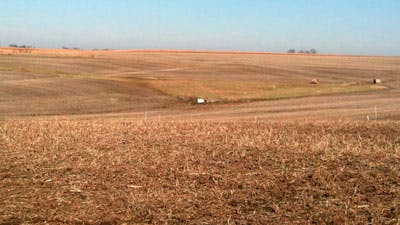Understanding The Fate Of Nitrate In Perennial Filter Strips

Runoff from agricultural fields contains nutrients that can adversely affect surface water quality, human health, and aquatic life. Nitrates from corn and soybean croplands across the Midwestern United States, for example, can end up in the Gulf of Mexico. There, nitrates can cause algal blooms which deplete oxygen from Gulf waters. Currently, such blooms cause a “dead zone” devoid of marine life across an area as large as Connecticut.
But perennial filter strips – areas of native plants or grasses – can help. Filter strips can reduce the amount of nutrients, including nitrates, entering water sources and ultimately ending up in the Gulf. There are three ways filter strips can remove nitrates from agricultural runoff. The nitrates may be sequestered in soil organic matter or taken up by plants. Nitrates may also be released into the atmosphere as nitrogen by microbes through a process called denitrification.
Which of these processes is most prevalent in filter strips was a question that David Mitchell, lead author of a new study, wanted to answer. He, and fellow researchers at Iowa State University, compared the relative contributions of denitrification, organic matter, and plants towards removing nitrates from agricultural runoff. Their study was recently published online in the Journal of Environmental Quality.
Read more at www.soils.org/discover-soils/story/understanding-fate-nitrate-perennial-filter-strips

